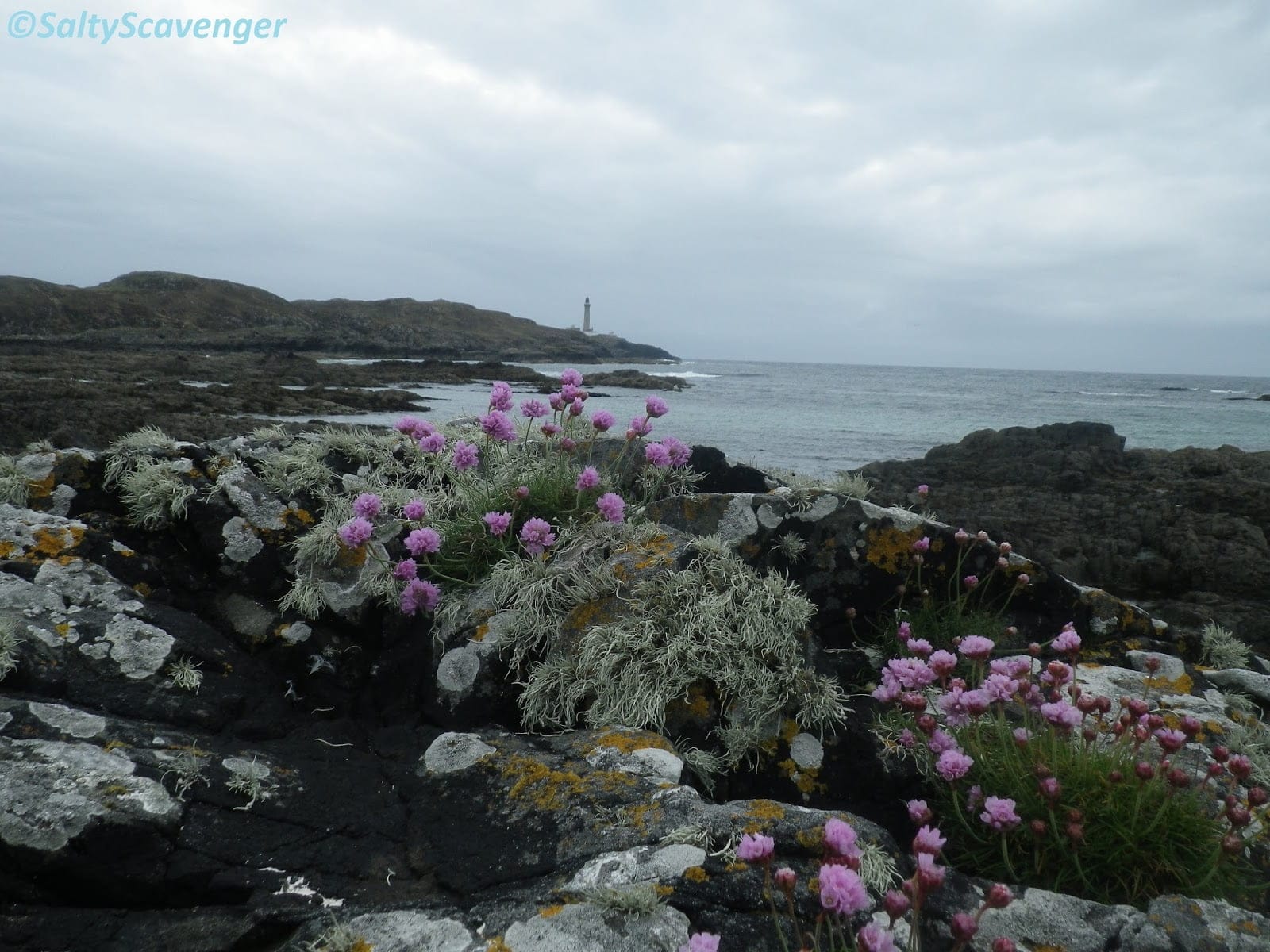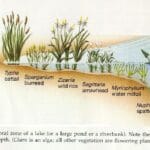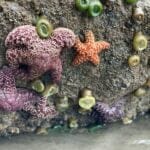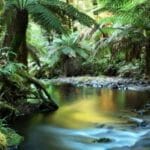Picture a rugged stretch of land where crashing waves meet the rocky shore. This is the supralittoral zone, a hidden world that provides a glimpse into the resilience of life and offers clues about the health of our oceans.
The Supralittoral Zone: Where the Wild Things Are (But Only Sometimes)
Ever walked along a rocky shore and noticed that strange zone above the waterline, the one that gets splashed by waves but never truly submerged? That’s the supralittoral zone, sometimes called the splash zone. It’s a bit like a wild party that only starts when the tide goes out, and only the toughest organisms are invited.
This zone is characterized by extreme temperature swings, going from baking hot in the sun to chilly and damp in the blink of an eye. Water is scarce, making it a desert-like environment with the added challenge of high salt content. Not exactly hospitable, right?
Yet, life finds a way. It’s remarkable what can survive in this harsh environment. Hardy creatures like crabs, resilient insects, and even certain types of algae have all adapted to thrive in this challenging habitat. They’ve developed ways to cope with the dryness, the salt, and the constant threat of being swept away by a wave.
The supralittoral zone isn’t just about individual survival stories; it plays a crucial role in the larger coastal ecosystem. It acts as a bridge between the land and sea, facilitating the exchange of nutrients and even organisms. For some marine species, like certain shellfish, it serves as a nursery ground where they can develop before venturing into the open ocean.
Scientists are fascinated by this zone, studying how its inhabitants have adapted to such a demanding environment. Each species offers a unique example of resilience, providing insights into the limits of life on Earth. Researchers are also working to understand how human activities, like pollution and climate change, might be impacting this delicate ecosystem.
The supralittoral zone reminds us that life can flourish even in the harshest places. It’s a living laboratory that challenges our understanding of what’s possible and highlights the incredible adaptability of the natural world.
What is the supralittoral zone?
Moving up from the bustling intertidal zone, we encounter the supralittoral zone, a unique area often referred to as the splash zone. This area experiences a constant battle between land and sea, receiving a salty kiss with every wave that crashes on the shore.
This constant shift between wet and dry creates a challenging environment for life. The organisms that call the supralittoral zone home must be able to withstand extreme temperature swings, drastic changes in salinity, and occasional battering from strong winds and waves.
So, who are these hardy survivors? Barnacles, those small, volcano-shaped creatures, are masters of this zone. They attach themselves to rocks with incredible strength, waiting for the occasional splash of seawater to feed. Limpets, those small snails that appear glued to rocks, use a powerful foot to cling on tight, grazing on algae during high tide.
However, it’s not just animals that have adapted to the supralittoral zone. Some tough plants, including certain types of seaweed and even flowering plants, have found ways to thrive in this challenging environment. They’ve evolved specialized adaptations to tolerate the salty spray, strong winds, and periods of dryness.
Though it may seem like an insignificant strip of land, the supralittoral zone plays a vital role in coastal ecosystems. It acts as a buffer, protecting inland areas from the full force of the ocean. This zone also provides a unique habitat for a surprising number of species, many of which have evolved specific adaptations to survive there. Additionally, it’s a crucial link in the food chain, supporting both marine and terrestrial animals.
Scientists continue to unravel the mysteries of the supralittoral zone. We’re learning more about the adaptations of the organisms that live there and how this zone interacts with the surrounding environment. What we do know is that this often-overlooked area is a testament to the resilience of life and contributes to the biodiversity of our planet.
What Animals Live in the Supralittoral Zone?
Given the extreme conditions of the supralittoral zone, you might wonder what kind of creatures can survive there. Surprisingly, quite a few! This splash zone teems with a diverse array of plants and animals specially adapted to this challenging environment.
Crabs, snails, and barnacles are commonly found clinging to rocks. They have evolved to cope with drying out, able to tolerate significant water loss. Seeking shelter under rocks or in crevices offers protection from the harsh sun and crashing waves.
Insects, too, have their own contingent in the supralittoral zone. Beetles and flies, for example, have developed special adaptations, including exoskeletons that act like raincoats and efficient water conservation mechanisms, allowing them to thrive in this environment.
The supralittoral zone also attracts visitors. Birds, such as sanderlings and oystercatchers, frequent this area. They’ve adapted to take advantage of the invertebrates exposed during low tide, using their specialized beaks to snag a meal.
While we’ve learned a lot about the inhabitants of the supralittoral zone, there’s still much to discover. Scientists are continually uncovering new insights into this fascinating ecosystem and its remarkable residents.
What is the difference between the benthic zone, littoral zone, and supralittoral zone?
Let’s break down the different zones found in coastal environments, starting with the ocean floor – the benthic zone. This zone encompasses everything on and just above the ocean bottom, regardless of depth. It’s like the “floor” of a vast underwater world, teeming with its own unique ecosystem.
Within the benthic zone, we find the littoral zone, which encompasses the shoreline area constantly engaged in a tug-of-war with the tide. This zone is submerged during high tide but exposed to the air during low tide. The organisms living here have developed remarkable adaptations to cope with this constant back and forth between wet and dry conditions.
Moving further up from the littoral zone, we reach the supralittoral zone, our splash zone. This area sits above the highest tide line. While it’s not often submerged, it still feels the ocean’s presence through salty spray and the occasional drenching.
Here’s a simple way to think about these zones:
| Zone | Description | Everyday Example |
|---|---|---|
| Benthic Zone | The entire ocean floor | Like the “floor” of a giant house, but instead of carpet, it has sand, rocks, and all sorts of marine life. |
| Littoral Zone | The area between high and low tide marks | That part of the beach that’s underwater at high tide but dry at low tide – a haven for crabs and other tough critters. |
| Supralittoral Zone | The area above the high tide line, only occasionally splashed by waves | The upper beach and rocks that only get wet during storms or exceptionally high tides – a challenging place to live! |
It’s important to note that these zones are not always perfectly defined. Ongoing research continues to reveal complex interactions between them. Factors like wave action, local geography, and even climate change can influence the boundaries between these zones, creating fascinating variations and overlaps.
Why is the supralittoral zone harsh?
The supralittoral zone, that fascinating strip of land where ocean waves meet the shore, presents a challenging environment for life. Imagine being alternately scorched by the sun and then doused in saltwater – not exactly a relaxing day at the beach!
One of the biggest challenges for life in the supralittoral zone is the constant threat of desiccation, or drying out. When the tide recedes, the sun and wind can quickly draw moisture from the air and ground, making it difficult for organisms to retain water.
Adding to the challenge are the extreme temperature swings experienced in this zone. During the day, the sun can bake the exposed rocks and sand, sending temperatures soaring. But without the water’s moderating influence, temperatures can plummet at night. Organisms living here must be able to withstand both baking and freezing conditions.
The powerful force of waves crashing on the shore poses another challenge. Organisms must be able to withstand the physical stress of wave action to avoid being swept away or crushed.
So how do plants and animals survive in such a harsh environment? They’ve evolved remarkable adaptations! Some have developed ways to conserve water, such as specialized tissues that store water like internal reservoirs. Others have evolved mechanisms to regulate their body temperature, seeking out cool, shady spots during the hottest parts of the day. And some are incredibly mobile, allowing them to escape the incoming or outgoing tide.
While scientists have uncovered many of the adaptations that allow life to thrive in this demanding habitat, there’s still much to learn about the complex interplay of factors that make the supralittoral zone such a fascinating and challenging place to live. Ongoing research continues to shed light on the secrets of this unique environment.
What is the meaning of Supralittoral?
The term “supralittoral” refers to the zone located above the high tide line, where the land meets the sea but remains mostly dry. It’s often called the “splash zone” because it’s only intermittently splashed by ocean waves, usually during high tides or storms.
Although it might seem counterintuitive, this zone, characterized by fluctuating moisture and salinity levels, teems with life. Organisms like barnacles and limpets, masters of the supralittoral zone, have evolved remarkable adaptations to survive these extreme shifts. They can cling tightly to rocks, conserve water, regulate their body temperature, and withstand prolonged periods of dryness.
The supralittoral zone acts as a bridge, or transition zone, between terrestrial and marine ecosystems. It facilitates the exchange of nutrients and even species between these two realms, making it an ecologically important habitat.
Scientists believe that understanding how organisms adapt to the harsh conditions of the supralittoral zone could provide insights into the potential impacts of climate change on coastal ecosystems. The resilience of life in this zone highlights the remarkable adaptability of nature, even in the face of challenging environmental conditions.
Why are there no plants in the supratidal zone?
The supratidal zone, positioned above the reach of the highest tides, presents a challenging environment for plants. While it might seem like a gentle misting, the occasional spray from ocean waves creates a harsh environment characterized by fluctuating conditions, high salt content, and intense sun exposure.
The constant salt spray is especially problematic for plants. As the wind carries tiny droplets of ocean water inland, these droplets evaporate on plant surfaces, leaving behind a salty residue. This salt can interfere with a plant’s ability to absorb water and carry out essential functions, much like trying to quench your thirst with saltwater.
The combination of intense sun and wind in the supratidal zone exacerbates the challenge of water loss. Imagine feeling constantly parched – that’s the reality for plants in this environment, making it nearly impossible for them to survive.
However, the lower supratidal zone, where the salt spray and drying winds are less intense, offers a slightly more forgiving environment. Here, you might find some incredibly resilient plants that have adapted to tolerate these harsh conditions.
These plant species have developed remarkable adaptations to thrive in this environment, such as thick, fleshy leaves that store water, and specialized coatings on their leaves that help prevent water loss. They are the true survivors of the plant world, equipped to handle the challenges of this demanding habitat.
Despite these adaptations, plant life in the supratidal zone remains limited. It’s a constant battle against the elements, and only a select few species can tolerate the unique challenges of this environment.
What is the difference between supralittoral and intertidal?
Imagine standing on a beach, the point where the sand meets the sea. This meeting point encompasses two distinct zones, each shaped by the ebb and flow of the tides.
Think of the supralittoral zone as the “splash zone.” This area gets wet from ocean waves, primarily during high tides or storms, but most of the time, it remains dry land. It’s like dipping your toes in the water but not quite taking the plunge.
The intertidal zone, on the other hand, is the “between-the-tides” zone. This area experiences a constant cycle of submersion and exposure as the tides rise and fall. It’s like playing in the waves, fully immersed during high tide and then exposed to the air as the tide recedes. The intertidal zone stretches from the highest tide mark down to the low tide mark.
The key difference between these two zones lies in how often they are submerged.
- The supralittoral zone resembles a desert oasis, experiencing drastic fluctuations in moisture, sunlight, temperature, and salinity.
- The intertidal zone, while still subject to changes, is more like a water park, with regular dips in the water providing a more stable environment.
Remarkably, both zones teem with life. The supralittoral zone, despite its harsh conditions, supports organisms like barnacles, limpets, and certain seaweeds that can withstand drying out. The intertidal zone, with its more predictable environment, boasts a wider range of residents, from seaweeds and crabs to fish and birds seeking a meal.
Scientists continue to study the intricate relationships between these zones and the organisms that call them home. There’s always more to discover about these dynamic coastal environments.
Want to learn more? Check out NOAA’s National Ocean Service: https://oceanservice.noaa.gov/facts/coastline.html
Why is the sublittoral zone important?
Extending from the point where waves lap at the shore out to the edge of the continental shelf, the sublittoral zone is a vibrant underwater world teeming with life. This zone serves as a vital habitat for a diverse array of marine organisms, including fish, crabs, lobsters, invertebrates, and even swaying forests of seaweed.
The sublittoral zone plays a crucial role in maintaining a healthy ocean. Seaweeds, acting like underwater trees, absorb carbon dioxide from the water as they grow, contributing to the fight against climate change. The intricate food webs within this zone, with creatures consuming and being consumed, facilitate nutrient recycling, which is essential for a healthy ocean ecosystem.
Beyond its ecological importance, the sublittoral zone also provides essential resources for humans. It’s a vital source of seafood, supporting fisheries that provide food and livelihoods for millions of people worldwide. For those who love to explore, this zone offers a mesmerizing underwater playground, home to coral reefs, playful dolphins, and a kaleidoscope of other marine life.
Here’s a summary of the sublittoral zone’s importance:
- Supports biodiversity: Provides homes, food, and breeding grounds for a vast array of marine plants and animals.
- Helps combat climate change: Plants in this zone absorb carbon dioxide through photosynthesis.
- Facilitates nutrient recycling: The sublittoral zone is a master recycler, ensuring the circulation of essential nutrients within the ocean.
- Provides food for the world: This zone is a crucial source of seafood, sustaining fisheries and providing food security for millions of people.
- Offers an underwater playground: Divers and snorkelers can immerse themselves in the beauty of this zone, connecting with the wonders of the ocean.
What are the four zones in the tidal zonation?
Imagine a staircase leading down to the ocean. Each step represents a different zone in the tidal zonation, each with its own unique set of challenges and inhabitants.
- The highest step, the supralittoral zone, barely gets wet. It’s only submerged during the highest tides and remains dry most of the time. Organisms in this zone, such as barnacles clinging to rocks or snails finding refuge in crevices, are adapted to withstand extreme temperatures and salty sea spray.
- Next down is the high intertidal zone, which experiences regular submersion and exposure. Organisms here, such as mussels and crabs, have adapted to survive both underwater and out of the water.
- The mid-intertidal zone offers a bit more stability. This zone remains submerged during most tides, only exposed to the air during exceptionally low tides. It’s home to a diverse community of organisms that thrive in a more stable, watery environment, including seaweeds, anemones, and some fish species.
- Finally, the lowest step on our staircase, the low intertidal zone, enjoys the most stable conditions. This area remains submerged almost all the time, except during rare, extreme low tides. Organisms here, such as sea stars, urchins, and even some octopus species, are well-suited for life underwater.
Scientists are continually learning more about these zones and the amazing adaptations of their inhabitants. Each zone offers a fascinating glimpse into how life thrives even in challenging environments.
Key Takeaways:
- The supralittoral zone is rarely submerged and home to hardy organisms adapted to extreme conditions.
- The high intertidal zone experiences regular submersion and exposure, requiring adaptable inhabitants.
- The mid-intertidal zone remains submerged for most tides, supporting a diverse community
- The low intertidal zone is almost always submerged, providing a haven for marine life adapted to underwater living.
Thinking about these zones as steps on a staircase helps visualize the gradual transition from land to sea and the incredible diversity of life found within each distinct area.
What Lives in the Littoral Zone?
The littoral zone, that fascinating stretch of the ocean influenced by the tides, is actually a collection of smaller zones, each with its own unique set of challenges and inhabitants.
Sunbathing and Splashing: Life in the Supralittoral Zone
The supralittoral zone, sometimes called the splash zone, represents the upper reaches of the littoral zone, touched by the ocean only occasionally during high tides or storms. Life here is all about adapting to extremes – scorching sun one minute and a drenching spray of saltwater the next.
Despite the challenges, the supralittoral zone is home to a surprising array of life. Barnacles and limpets, with their adaptations for clinging to rocks, are common sights. Tough plants, able to tolerate salty, sun-baked conditions, also find a foothold in this challenging environment.
The Intertidal Zone: Adapting to a Life of Change
The eulittoral zone, also known as the intertidal zone, experiences a constant cycle of submergence and exposure as the tides ebb and flow. Organisms in this zone must be adaptable, able to survive both in and out of the water.
This dynamic environment supports a diverse community of organisms. Snails, crabs, sea stars, and seaweeds are just a few examples of the life that thrives in the intertidal zone.
The Sublittoral Zone: A World of Underwater Wonders
The sublittoral zone, the portion of the littoral zone that remains submerged, is a bustling underwater world. The ocean floor in this zone teems with life – seaweeds swaying in the currents, fish darting among coral reefs, and crustaceans crawling along the seabed.
This vibrant ecosystem plays a vital role in the health of our oceans, contributing to nutrient cycling, providing food and shelter for countless species, and even helping to regulate the Earth’s climate.
Exploring the Unknown
As scientists delve deeper into the intricacies of the littoral zone, our understanding of this dynamic environment continues to evolve. New discoveries remind us that there’s still much to learn about the complex web of life that exists where the land meets the sea.
internal links:
Did you know that the intertidal zone is the area of the seashore that is alternately covered and uncovered by the tides? It’s home to a unique community of littoral zone organisms that have adapted to the intertidal zone definition of periodic submersion and exposure. If you’re curious about the fascinating creatures that call the littoral zone home, be sure to check out these links.
- Sept 31 Myth: Unveiling Calendar Secrets - March 18, 2025
- How Long & Till December 18, 2025: Accurate Countdown Guide - March 18, 2025
- Discover Japanese Artists: A Complete History - March 18, 2025

















2 thoughts on “Unveiling the Secrets of the Supralittoral Zone: A Marine Ecologist’s Perspective”
Comments are closed.